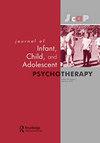On Racial Melancholy and the Need to See. Commentary on Archangelo and O’Loughlin’s Paper “Exploring Racial Formation in Children: Thoughts from an Encounter with Black Children in Brazil”
Q3 Psychology
Journal of Infant, Child, and Adolescent Psychotherapy
Pub Date : 2021-07-03
DOI:10.1080/15289168.2021.1965433
引用次数: 1
Abstract
Archangelo and O’Loughlin’s beautifully written paper begins with a reference to the experiments by Kenneth and Mamie Clark on Black children’s preference for white dolls. This preference has always been understood to reflect the conflicted racial identities of Black children who are raised in a society that devalues individuals with darker skin and treats them as inferior. The preference for white dolls and the conflicted racial identities they denote point to deeply oppressive racial policies that have left Black children and everyone around them with “deep racial scars” (p. 1). They also point to a level of biracial awareness that white children do not typically demonstrate. Unlike Black children, many of the white children grow up without ever having to question the glaring racial inequalities in the world and the painful realities that maintain them. Sadly, the Black Brazilian children Archangelo and O’Loughlin present in their paper demonstrate the same troubling preference for white dolls. Much like the children in the Clarks’ study, nine-yearold Sarah finds white dolls to be prettier and more intelligent. Listening to her words makes one wonder where her faith in the superiority of the white dolls comes from. One can ask the same question in the case of the four-year-old-girl who compares her nail polish to Archangelo’s and says, “Your color is the color of happiness, mine’s of badness.” It is a painful statement to read as she associates the darker color of her nails and most likely, of her skin, with badness. In it one can read not just a silly equivalence or a reference to a more desired identity of an adult woman with wellmanicured nails, but her quick association of dark color with badness. Research shows that children between the ages of 3–4 make the connection between appearance and color but have no understanding of race as a social construct (Goodman, 1952; Stoute, 2019). What have these girls experienced that has contributed to such beliefs? What have they internalized that has led them to these symbolic equations and statements of negation? Racial formation, Archangelo and O’Loughlin note, is a complex process that involves more than adopting “wrong beliefs” and holding “wrong attitudes” (p. 6). It is a process that operates on a conscious and unconscious level and is shaped by socio-historical developments and the racial inequalities that emanate from them. Archangelo and O’Loughlin do not dwell on the history of racial oppression and exploitation and the effect of these realities on the formation of racial identity over generations. Instead, they turn their lens on the experiences of racial grief and melancholy and the role they play in the formation of racial identity for children who live in racially oppressive cultures. The skin color of children who are raised in such cultures is “stained with grief,” they state, and has an “intergenerationally transmitted racial melancholy” (p. 14). The grief they experience is derived from oppressive realities and repeated experiences of systemic hate. But the racial melancholy the authors refer to is a more diffuse experience, one that cannot be easily expressed with words. As O’Loughlin论种族忧郁和看的需要。评注Archangelo和O 'Loughlin的论文《探索儿童中的种族形成:来自与巴西黑人儿童相遇的思考》
Archangelo和O 'Loughlin这篇文笔优美的论文一开始就引用了Kenneth和Mamie Clark关于黑人儿童偏爱白人玩偶的实验。人们一直认为,这种偏好反映了黑人孩子的种族身份冲突,他们在一个贬低肤色较深的人、把他们视为劣等人的社会中长大。对白人娃娃的偏爱和它们所代表的种族身份冲突表明,种族政策的压迫使黑人儿童和他们周围的每个人都留下了“深深的种族伤痕”(第1页)。它们还表明,白人儿童通常不会表现出一定程度的混血儿意识。与黑人孩子不同,许多白人孩子在成长过程中从未质疑过世界上明显的种族不平等,以及维持这种不平等的痛苦现实。可悲的是,Archangelo和O 'Loughlin在他们的论文中提到的巴西黑人儿童也对白人玩偶表现出了同样令人不安的偏好。就像克拉克研究中的孩子们一样,9岁的莎拉发现白色的洋娃娃更漂亮,也更聪明。听着她的话,人们不禁想知道她对白人娃娃优越性的信念从何而来。同样的问题也可以用在一个四岁的小女孩身上,她把自己的指甲油和阿尔changelo的作比较,然后说:“你的颜色是幸福的颜色,我的是邪恶的颜色。”当她把自己指甲的深色,很可能还有皮肤的深色,与坏联系在一起时,这是一个令人痛苦的陈述。在这篇文章中,你不仅可以读到一个愚蠢的等同,也可以读到一个有着精心修剪的指甲的成年女性更令人渴望的身份,但她很快就把深色与坏联系起来了。研究表明,3-4岁的儿童在外貌和颜色之间建立了联系,但对种族作为一种社会结构没有理解(Goodman, 1952;斯托特,2019)。这些女孩经历了什么,促成了这样的信念?他们内化了什么使他们得出这些象征性的等式和否定的陈述?Archangelo和O 'Loughlin指出,种族形成是一个复杂的过程,不仅仅是采用“错误的信念”和持有“错误的态度”(第6页)。这是一个在有意识和无意识层面上运作的过程,并受到社会历史发展和由此产生的种族不平等的影响。Archangelo和O 'Loughlin没有详述种族压迫和剥削的历史,以及这些现实对几代人形成种族认同的影响。相反,他们把镜头对准了种族悲伤和忧郁的经历,以及这些经历对生活在种族压迫文化中的儿童形成种族认同所起的作用。他们说,在这种文化中长大的孩子的肤色“染上了悲伤”,并且有一种“代际传播的种族忧郁”(第14页)。他们所经历的悲伤来自于压迫性的现实和反复经历的系统性仇恨。但作者提到的种族忧郁是一种更广泛的经历,一种无法轻易用语言表达的经历。作为intuition
本文章由计算机程序翻译,如有差异,请以英文原文为准。
求助全文
约1分钟内获得全文
求助全文
来源期刊

Journal of Infant, Child, and Adolescent Psychotherapy
Psychology-Clinical Psychology
CiteScore
1.70
自引率
0.00%
发文量
37
 求助内容:
求助内容: 应助结果提醒方式:
应助结果提醒方式:


